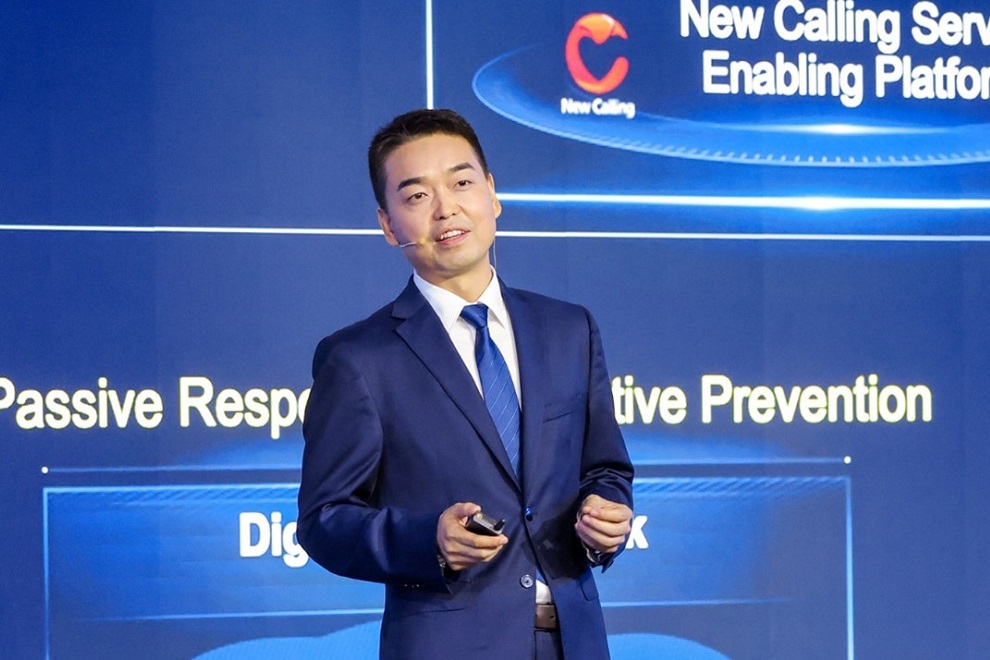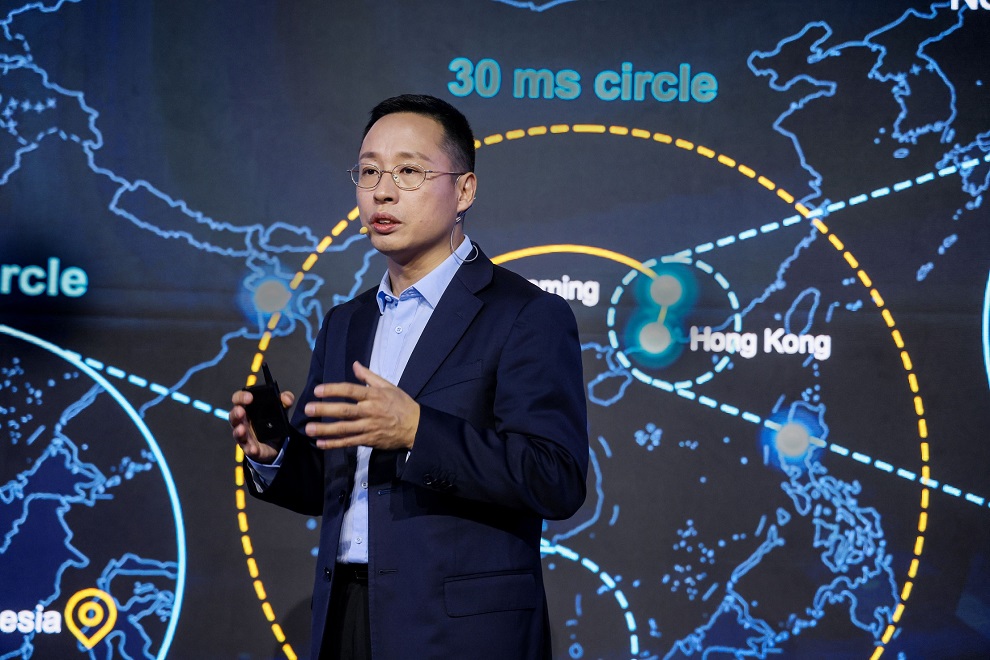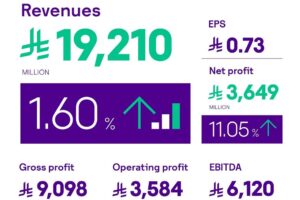And Releases Innovative Practices of IntelligentCore, Fast-Tracking 5G Business Success
At the Huawei Product & Solution Innovation and Practice launch event held during the 2023 MWC in Shanghai, Huawei took the opportunity to launch four Intelligent OptiX innovative practices of F5.5G, in scenarios of smart home, small and micro enterprises, smart manufacturing and metro network.
Richard Jin, President of Huawei Optical Business Product Line, stated that 1Gbps has been everywhere, and 10Gbps is taking off. “In the past year, Huawei’s F5.5G innovations, such as FTTR F30/B30, 50G PON, Alps-WDM, and 400G/800G, have been widely adopted in Asia, Europe, Middle East, Africa, and Latin America. It deeply changed people’s life and work. We hope more carriers and partners join the F5.5G innovation and practice and work together to embrace 10Gbps Everywhere,” Jin said.
- In terms of smart homes, over 4.6 million household users are using Huawei FTTR to create 1Gbps home Wi-Fi connection. In Brazil, Oi and Huawei took the initiative to put FTTR into commercial use in Latin America. They leveraged the ultra-high bandwidth, ultra-wide coverage, ultra-high concurrency, and 5A-level services to build smart homes featuring whole-house ultra-gigabit and whole-house intelligence for users, thereby improving efficiency, consumer satisfaction and ARPU for Oi.
- In terms of small and micro enterprises, tens of thousands of enterprises have adopted the Huawei FTTR solution. Leveraging B30’s advantages, such as ultra-gigabit Wi-Fi, 300 concurrent terminals, and app-based intelligent O&M, China Unicom Henan released the FTTR B30 fusion package applicable to various scenarios, including offices, supermarkets, convenience stores and security protection. Over the past six months, China Unicom Henan has attracted nearly 10,000 enterprise users, and increased consumer satisfaction by 20%, enabling the digital transformation of small and micro enterprises.
- In terms of smart manufacturing, China Telecom Research Institute worked with Huawei to complete the world’s first 50G PON–based industrial Internet pilot. Huawei’s 50G PON provides 10Gbps bandwidth for campuses, provides reliable and flexible access for industrial Automated Optical Inspection (AOI), and achieves a 10-fold improvement in inspection efficiency, realizing positive benefits for smart manufacturing. At present, Huawei has been conducting the innovation verification for its 50G PON solution together with over 30 partners around the world.
- Using Huawei’s Alps-WDM, China Unicom Chongqing has built metro networks with the optimal TCO. Huawei’s Alps-WDM increased the single-wavelength rate from 10G to 100G at the integrated access site and created a bandwidth resource pool shared by multiple areas for on-demand usage. It also helped create an ultra-low latency circle with 1ms coverage of the main city, 2.5ms coverage of the entire city, and 3ms coverage of Chengdu- Chongqing dual cities. Till now, Huawei’s Alps-WDM has dozens of commercial applications worldwide.
The 10Gbps era is just around the corner. Huawei calls on all parties in the industry to innovate and enrich F5.5G application scenarios together and apply F5.5G to all aspects of the digital economy. In doing so, the company believes we can embrace “10Gbps Everywhere”.
Huawei Releases Innovative Practices of IntelligentCore, Fast-Tracking 5G Business Success
Huawei released its innovative practices of IntelligentCore. In doing so, Huawei aims to provide references for operators to build intelligent, simplified, flexible networks, stimulate service innovation, enable experience monetization, and fast-track 5G business success.

George Gao sharing Huawei’s IntelligentCore practices
George Gao, President of Huawei Cloud Core Network Product Line, noted at the conference, “Operators have shifted their focus on 5G networks from construction to operations. However, at this juncture, they are facing the challenges of inadequate network flexibility, homogenous user experiences, and stale applications.” He continued, “To help operators navigate through these challenges, Huawei creatively introduced intelligence into core networks, and on top of this, carried out an array of innovative practices together with operators. These practices empowered almost every aspect of core networks, from voice and video services to experience differentiation and intelligent O&M. In doing so, Huawei helped operators effectively improve user experiences and better monetize services.”
Huawei’s IntelligentCore practices have upgraded the 5G core networks from four aspects:
From voice-only operations to content operations: Huawei adopts an intelligent media engine to empower the New Calling solution. The engine leverages a plug-in media architecture and integrates the intelligent New Calling model as well as graphic and video processing algorithms in order to realize network-native intelligence for in-depth media processing. With this, Huawei helped China Mobile develop a batch of New Calling services, which deliver 20% to 30% higher performance than the industry average and reduce the artifact and frame freezing rate to less than 0.5%. One of the key benefits of this is that users can obtain richer content during calling and enjoy an exceptional communication experience.
From homogeneous 2D to distinctive 3D: Powered by an intelligent 2D-to-3D conversion engine, Huawei’s Vivision solution significantly reduces the costs of producing 3D videos. Zhejiang Mobile was the first to adopt this solution and has successfully utilized it to automatically convert over one hundred 2D movies into 3D, allowing users to obtain an immersive video experience on different types of terminals. This helped Zhejiang Mobile grow both its user base and ARPU.
From traffic monetization to experience monetization: With intelligent network pipes, Huawei’s ITE solution implements intelligent service awareness, intelligent experience analysis, and intelligent scheduling acceleration to help operators deliver and monetize differentiated user experiences. This solution has been piloted at Zhejiang Mobile, with results demonstrating that the solution not only doubles the bandwidth for live TV services but also reduces the latency by 25% to 45%.
From passive response to proactive prevention: Huawei’s Core Network ADN solution introduces cutting-edge technologies such as digital twin, intelligent model learning, intelligent surge simulation, and intelligent flow control parameter optimization in order to identify network risks before they become an issue. Driven by these technologies, Huawei’s DR switchover simulation and evaluation solution has facilitated more than 10 cross-DC DR drills for millions of China Mobile’s subscribers.
This is just the beginning of the benefits intelligent core networks will deliver to operators and users. Huawei will continue to work with industry partners to make networks more intelligent, to make the intelligence more network-oriented, and to further embrace the intelligent world. Together, let’s build an intelligent, future-proof core network, accelerating the growth of 5G networks, boosting service innovation, maximizing 5G value for the industry, and creating better 5G business success.












